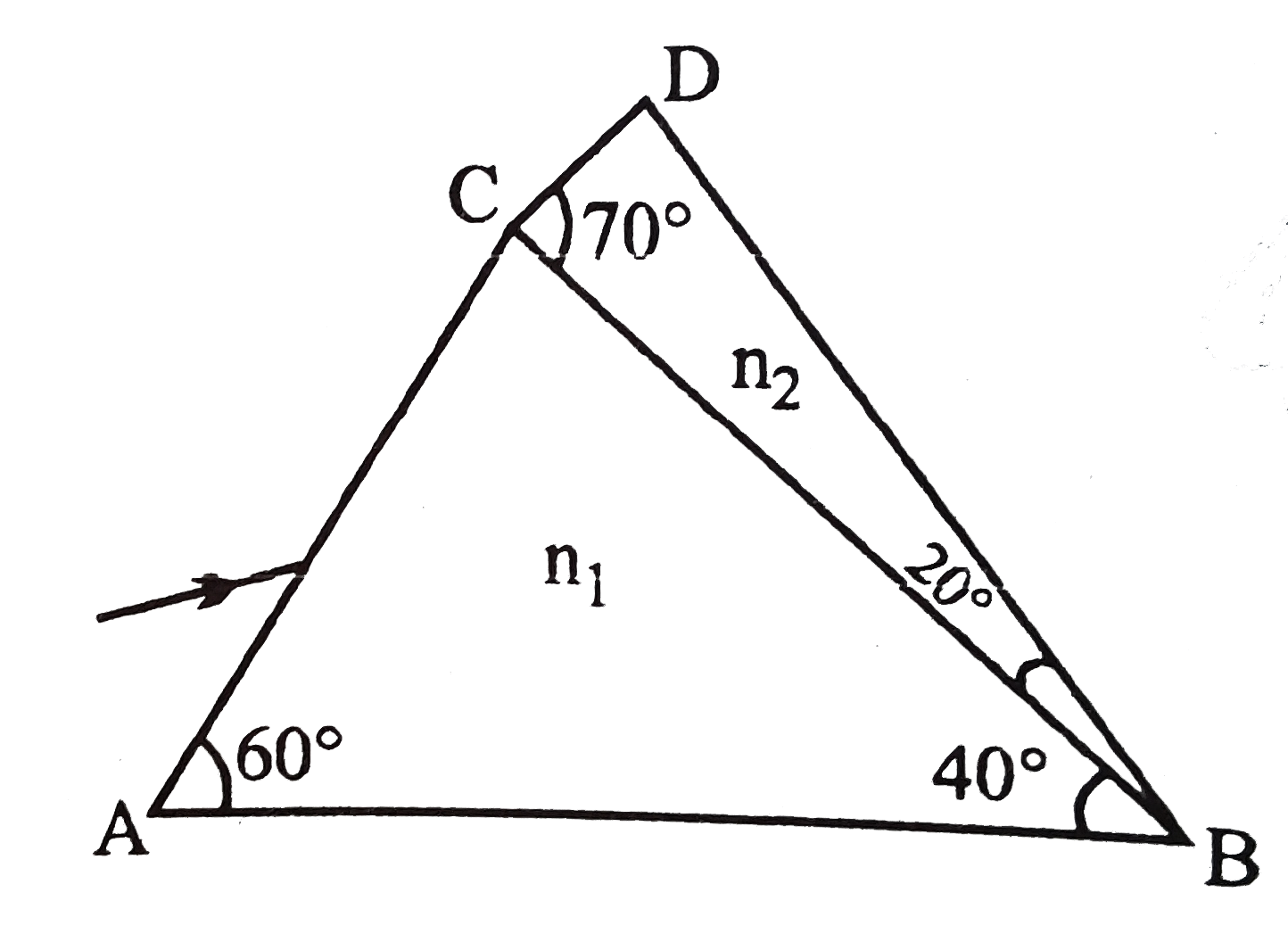At 20∘C a liquid is filled upto 10 cm height in a container of glass of length 20 cm and cross-sectional area 100cm2 . Scale is marked on the surface of container. This scale gives correct reading at 20∘C . Given γL=5×10−5k−1,αg=1×10−5∘C−1
_S01_107_Q01.png)
The volume of liquid at 40∘C is :-Solution in Gujrati
10.01cm
10.004 cm
10.006cm
10.04cm
The correct Answer is:B
∵TV=SR(1+αgΔT)
∴SR=(TV)(1+αgΔT)−1=(TV)(1−αgΔ)=(10.006)(1−10−5×20)=10.006−0.002=10.004 cm
Topper's Solved these Questions
- BOOK - ALLEN CHAPTER - GEOMETRICAL OPTICSEXERCISE - EXERCISE -0165videos
GEOMETRICAL OPTICS
- BOOK - ALLEN CHAPTER - GEOMETRICAL OPTICSEXERCISE - EXERCISE -0282videos
GEOMETRICAL OPTICS
- BOOK - ALLEN CHAPTER - GEOMETRICAL OPTICSEXERCISE - subjective14videos
GEOMETRICAL OPTICS
- BOOK - ALLEN CHAPTER - CURRENT ELECTRICITYEXERCISE - EX.II66videos
CURRENT ELECTRICITY
- BOOK - ALLEN CHAPTER - GRAVITATIONEXERCISE - EXERCISE 49videos
GRAVITATION
Similar Questions
On an X temperature scale, water freezes at −125.0∘X and boils at 375.0∘X. On a Y temperature scale, water freezes at −70.0∘Y and boils at −30.0∘Y. The value of temperature on X-scale equal to the temperature of 50.0∘Y on Y-scale is
04:39View SolutionA triangular plate has two cavities , one square and one rectangular as shown in figure . The plate is heated.
_E01_066_Q01.png) 02:30View Solution
02:30View SolutionA prism of refractive index n1 & another prism of reactive index n2 are stuck together without a gap as shown in the figure.The angle of the prisms are as shown. n1&n2depend onλ,the wavelength of light according to n1=1.20+10.8×104λ2&n2=1.45+1.80×104λ2 where λ is in nm.

(i)Calculate the wavelength λ0for which rays incident at any angle on the interfaceBCpass through without bending at that interface.
(ii) for light of wavelength λ0,find the angle of incidencei on faceACsuch that the deviation produced by the combination of prism is minimum.05:06View SolutionIn the Bohr's model of hy drogen atom, the electron moves around the nucleus in a circular orbit of radius 5×10−11m. Its time period is 1.5×10−16s. The current associated with the electron motion is:-
04:23View SolutionAssertion : The difference in the value of acceleration due to gravity at pole and equator is proportional to square of angular velocity of earth.
Reason : the value of acceleration due to gravity is minimum at the equator and maximum at the pole.03:43View SolutionA metre scale made of steel is calibrated at 20C to give correct reading. Find the distance between 50 cm mark and 51 cm mark if the scale ia used at 10C. Coefficient of linear expansion of steel is 1.1×10−50C^(−5)
View SolutionBrass scale of a Barometer gives correct reading at 0^(@)C . Coefficient of linear expansion of brass is 18 xx 10^(-6 xx @)C . If the barometer reads 76cm at 20^(@)C , the correct reading is (gamma_(Hg) = 18 xx 10^(-5 //@)C)
02:58View SolutionAt 20∘C a liquid is filled upto 10 cm height in a container of glass of length 20 cm and cross-sectional area 100cm2 . Scale is marked on the surface of container. This scale gives correct reading at 20∘C . Given γL=5×10−5k−1,αg=1×10−5∘C−1
_S01_108_Q01.png)
The actual height of liquid at 40∘C is -04:54View SolutionA barometer with a brass scale reads 75.34 cm at 25∘C. The scale was graduated at 20∘C. What will be the reading of the barometer at 0∘C? Coefficient of linear expansion α for brass =18×10−6∘C−1 and coefficient of linear expansion γ for mercury =18×10−5∘C−1.
View SolutionCalculate the surface tension of a liquid if 5 xx 10^(-3)Nm^(-1) of work is done to increase the surface area of a liquid film from 4 cm xx 3" cm to 8 cm "xx "5 cm."
View SolutionThe length of a brass rod at 20^@C is observed to be 0.8 m when measured by an iron scale, correct at 0^@C . What will be the correct length of the rod at 0^@C ? Take, alpha_("iron") = 1.2 xx 10^(-5) ""^@C^(-1) alpha_("brass") = 1.9 xx 10^(-5) ""^@C^(-1)
03:21View SolutionA meter scale made of steel is calibrated at 20∘C to give correct reading. Find the distance between 50 cm mark and 51 cm mark if the scale is used at 10∘C. Coefficient of linear expansion of steel is 1.1×10−5C−1
03:22View SolutionTwo meter scales, one of steel and the other of aluminum, agree at 20∘C. Calculate the ratio aluminum-centimeter/steel-centimeter at (a) 0∘C, (b) 40∘C and (c) 100∘C. αsteel=1.1×10−5C−1 and αaluminum=2.3×10−5C−1.
05:25View SolutionA vertical glass tube closed at the bottom contains mercury to height of 50 cm at 20^(@)C. What will be the height of mercury column at 40^(@)C? (gamma _(Hg (R )) = 18.5 xx 10 ^(-5) //^(@)C and alpha _(g) = 8 xx 10 ^(-6) //^(@)C)
04:30View SolutionA cyclindrical tube of length 100 cm Contains some mercury inside. If the length of remaining air column remains constant at all temperatures, the height of mercury is neglect the expansion of cross section (gamma_(B) of Hg= 18 xx 10^(-5)//^(@) C, gamma_(g) of tube = 2.7 xx 10^(-5)//^(@) C )
06:00View SolutionA meter scale made of steel is calibrated at 20∘C to give correct reading. Find the distance between 50 cm mark and 51 cm mark if the scale is used at 10∘C. Coefficient of linear expansion of steel is 1.1×10−5∘C−1
03:21View Solution

